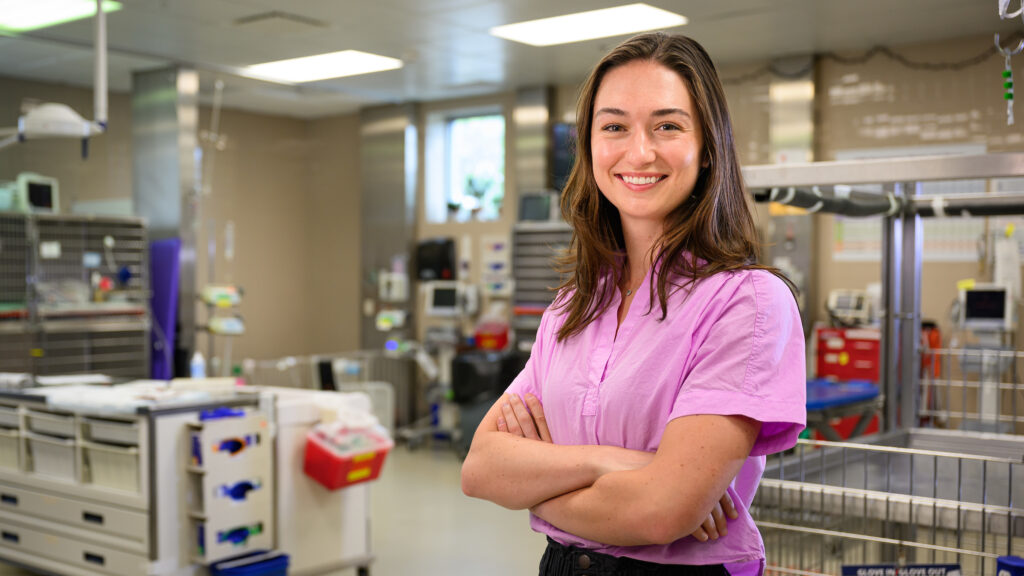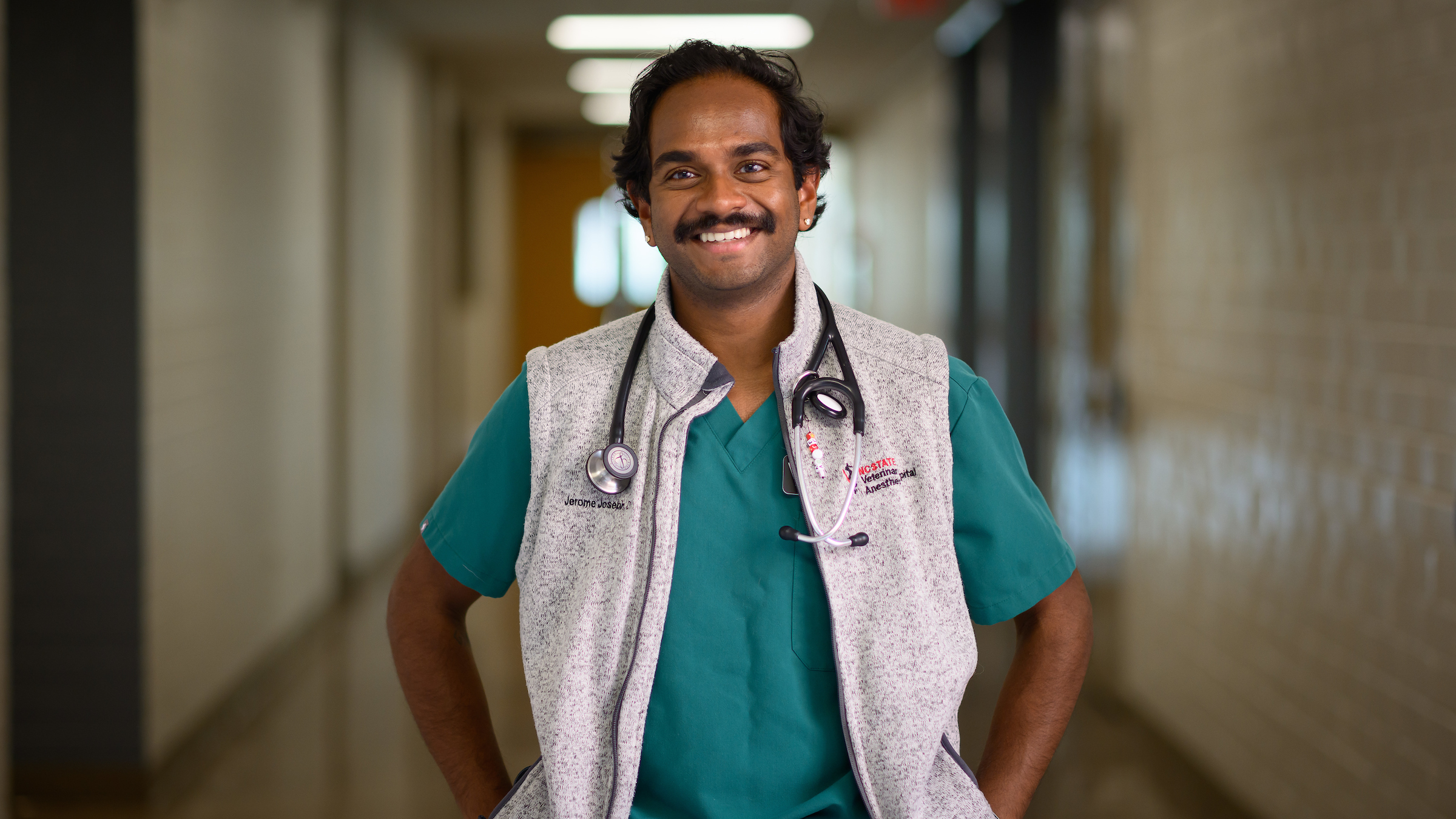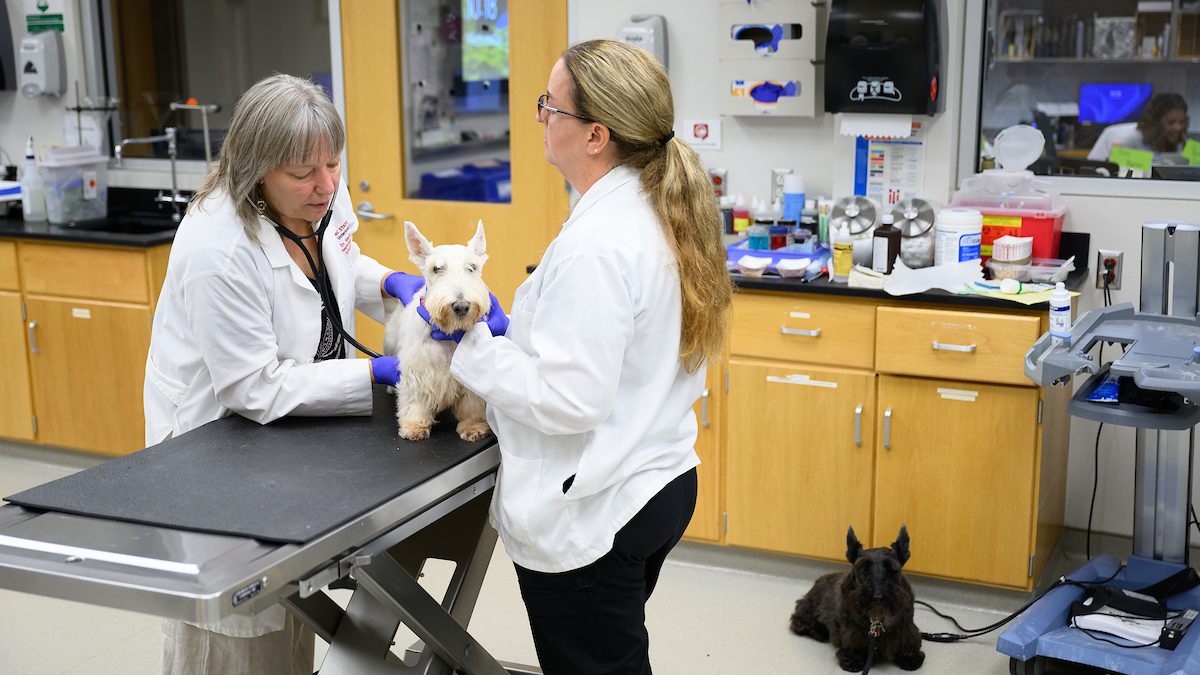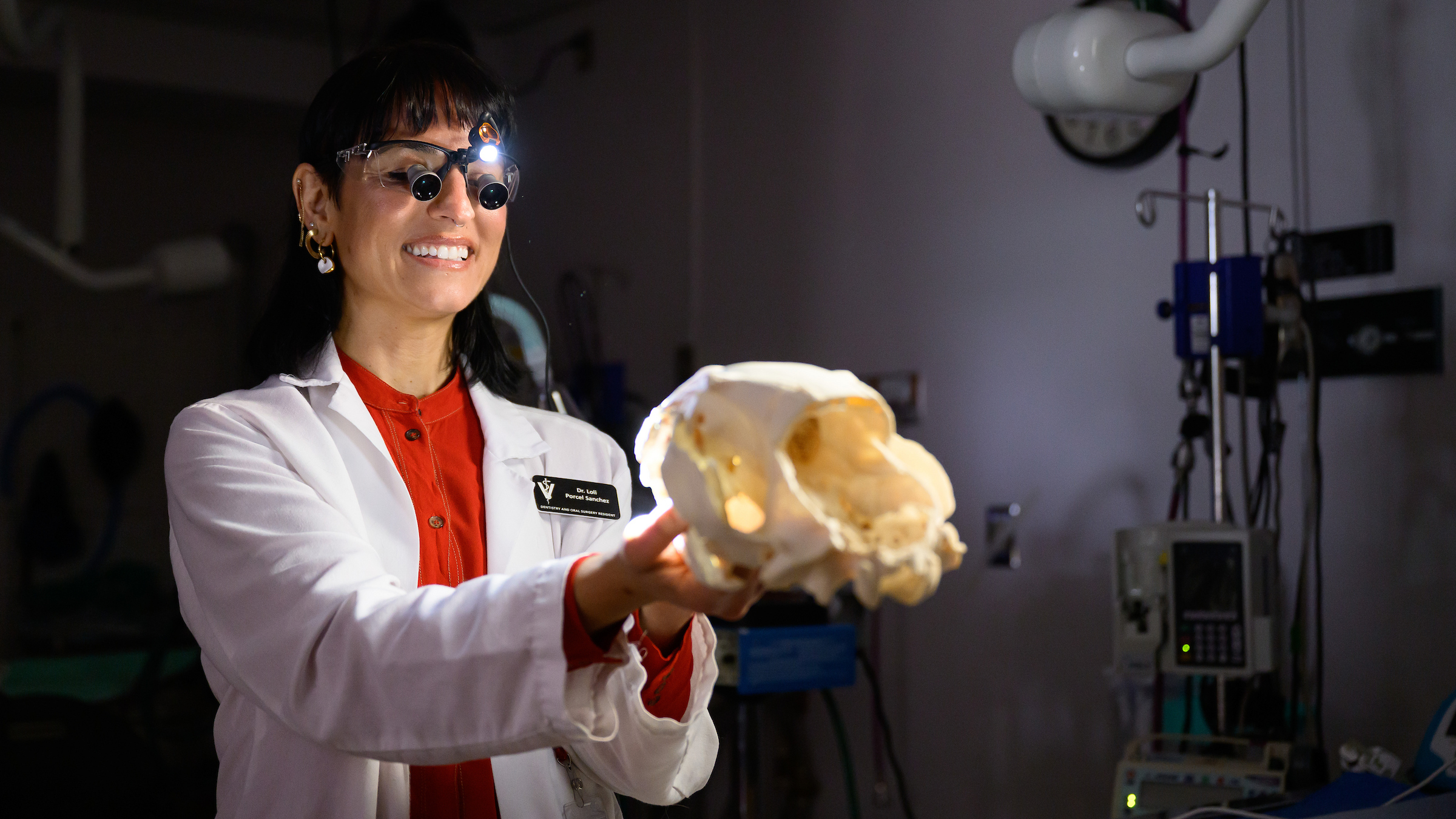Fighting infection and the clock: Emergency brain surgery saves Leo’s life
When a tabby cat’s outdoor adventures led to rapidly progressing, life-threatening symptoms, experts from across the NC State Veterinary Hospital raced to identify and treat the cause.

Dr. Eileen Tyler likes to fit song lyrics to her life, and she has found a new anthem for her 9-year-old tabby cat, Leo, as he has thrived after an emergency craniotomy.
“You know that Katy Perry song, ‘Roar?’ The refrain says, ‘I got the eye of the tiger, a fighter/ dancing through the fire/’Cause I am a champion and you’re gonna hear me roar,’” she says. “I feel like that describes his whole episode: Just dance straight through it. And I just feel so fortunate.”
Leo gave the retired anesthesiologist, who lives in Chapel Hill, her first in-depth experience with animal medicine when he was rushed to the NC State Veterinary Hospital in April confused, cold and limp.
He was unresponsive by that evening. But Leo’s quick-thinking care team at NC State saved his life by discovering a severe head wound and linking it to his poor mental and physical states. They diagnosed him with a brain abscess and rushed him into surgery that night.
Their work was so efficient, and Leo’s healing so fast, that he went home just four days later.
“I’m so, so thankful for the veterinarians at NC State, and I can’t say enough good about them,” Tyler says. “I feel like the whole thing was a miracle.”
Cases like Leo’s demonstrate the incredible expertise and exceptional standard of care cats and their owners can expect from the NC State College of Veterinary Medicine’s new Feline Health Center, say co-directors Dr. Margaret Gruen and Dr. Alex Lynch.
While not a physical clinic, the center unites a specialized team of veterinarians trained to respond to felines’ unique needs in the hospital, lab and community. It debuted this spring.
“We are thrilled to see how well Leo is doing, thanks to the skill and expertise of the doctors and nurses working in neurology, anesthesia, diagnostic imaging and emergency/critical care,” Lynch says.
Connecting the dots
At home in Chapel Hill, Leo spent his days inside and his nights outdoors, where his veterinarians believe he was likely bitten by another animal.
Tyler was grooming Leo in early April when she noticed his hair was sticking together near the base of his neck and the top of his head, but Leo did not appear hurt. Her concern rose as he became lethargic over the next 10 days, and she raced with Leo to his local veterinarian when he began pressing his head against the wall in a sign of nervous system damage.
Leo’s veterinarian sent him to NC State for imaging April 15. Dr. Sarah Saylor, then a small animal rotating intern, met Leo in the ER and noticed he was not responsive, unable to walk and cold with a low heart rate.
“I talked to his local vet prior to him arriving, so I had some suspicion of what he was going to look like,” Saylor says. “But when he came in the door, he was much worse off than I was expecting. I was really quite concerned that he was going to die.”

When she examined him, she found a wound on the top of his head that looked like an abscess, or a buildup of pus that appears around infected tissue, and what felt like a crack in his skull.
“He was acting quite mentally inappropriate, and so one could suspect that potentially whatever was happening on the skin of his head might be connecting deeper,” she says. “Because Leo was doing so poorly, we trusted our gut and rushed into trying to get imaging to figure out what was going on.”
An ultrasound showed a fracture puncture line in Leo’s skull that appeared to prove Saylor’s suspicions. A CT scan confirmed he had an “absolutely nasty brain abscess” that required immediate attention, Saylor says.
Dr. John Macri, a neurology resident and the primary clinician on Leo’s case, says brain abscesses are rare and Leo’s would have kept growing if left untreated.
“There’s a very fixed amount of space in the skull,” Macri says. “And so if you have something that’s putting a lot of pressure on the brain, the animal could die.”
Leo’s care team initially wanted to treat him with antibiotics and monitor him overnight before deciding whether he needed surgery, Macri says. But Leo was less responsive every time Macri checked on him and started moving into opisthotonus, a backward-arching posture that showed Macri Leo’s brain was herniating, or being pushed out of his skull.
“I don’t know if he would have lived through the night without surgery,” Macri says.
Macri called in Dr. Natasha Olby, a veterinary neurologist and neurosurgeon at NC State, about 10:30 that night. The two performed an emergency craniotomy into the early morning, removing part of Leo’s skull to extract damaged tissue, drain the abscess and decompress his brain.
The surgery was high-risk because Leo’s infection was so advanced, and his veterinarians were uncertain whether he would make a full recovery. But Leo, ever the fighter, surprised them.
“The morning after the surgery, he already looked a little bit better but was still very mentally inappropriate, very much not able to walk yet,” Macri says. “By the second or third day, he was up and walking in his kennel, pacing back and forth. He was doing really well.”

Tyler says she appreciated Leo’s veterinarians keeping her updated throughout the process, including calling her in the early morning after his surgery to let her know Leo was OK. Saylor says Leo’s team was thrilled to share his progress.
“When you see sick cats like that in the ER, sometimes you expect the worst and you don’t expect them to make this miraculous recovery,” she says.
Leo returned home April 19 with antibiotics, anti-inflammatory steroids and pain medication. He regained his strength and returned to his adventurous self within days, Tyler says.
‘All the stars aligned’
Fitting for a cat with a constellation namesake, “all the stars aligned” in Leo’s care, Saylor says. Leo recently finished his steroid course and is back to normal, with one charming change.
“He’s a lot more clingy now,” Tyler says. “He likes to be mostly where I am or where he can hear me. When I lay down or watch TV, he gets right up there with me. I think at some level, he must know I helped save him.”
She’s so grateful to NC State veterinarians for Leo’s survival that she’s planning a donation to help them save other pets’ lives.
“My friends and I pick a charity every year to donate to, and I’m definitely going to be giving to the NC State Veterinary Hospital,” Tyler says. “I would absolutely recommend them to anyone. Every little aspect of their care was just outstanding.”
- Categories:


